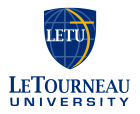Below is a summary of the abstract you submitted. Presenting author(s) is shown in bold.
If any changes need to be made, you can modify the abstract or change the authors.
You can also download a .docx version of this abstract.
If there are any problems, please email Dan at dar78@pitt.edu and he'll take care of them!
This abstract was last modified on March 22, 2024 at 12:54 a.m..

Mycobacteriophages are viruses that infect bacteria of the family Mycobacteriaceae. Serine and tyrosine integrases are enzymes that facilitate recombination between a specific attachment site (attP) in the phage genome and the corresponding attachment site (attB) in the host bacterial genome. Whereas serine integrases do not need host cofactors, tyrosine integrases require the help of host cofactors. Serine integrases are therefore believed to be more efficient at site-specific recombination, and bear more promise than tyrosine integrases for use in synthetic biology, cell line manipulation, genetic engineering, biotechnology, and gene therapy via the introduction of att sites or sequences with partial homology to the att sites. HHPred and Phamerator analysis showed subcluster A4 phage Lunsford to have a serine integrase. Although there was significant homology among the upstream subcluster A4 minor tail proteins, lack of protein sequence homology was observed among the integrase genes, with some phages having either a serine or tyrosine integrase, a trend observed among other cluster A members. Notably, a large majority of the fully annotated phages had the serine integrase, while a lower percentage had the tyrosine integrase. Specifically, subcluster A5 had the highest prevalence of serine integrases (97.4%), followed by A1 (95.2%), A4 (82.3%), A3 (24.1%) and A2 (0.01%). No serine or tyrosine integrases were observed in subcluster A6. Subcluster A2 had the highest prevalence of tyrosine integrases (80.2%), followed by A3 (75.9%, and A4 (17.5%). Subclusters A1, A5, and A6 had no tyrosine integrases. Notably, A6 members also lacked serine integrases (Fig. 4). All cluster A members are temperate phages, so their serine integrases facilitate a symbiotic relationship with their bacterial host. The high prevalence of the serine integrase in phage the cluster A and subclusters A1, A4, and A5 members implies that these phages have great potential to be used by scientists in genetic engineering and synthetic biology applications, including developing genetically engineering food crops to resist adverse environmental conditions, pests, and pathogens, and to increase plant and animal productivity to mitigate against world hunger, besides providing potential cures for genetic diseases.
